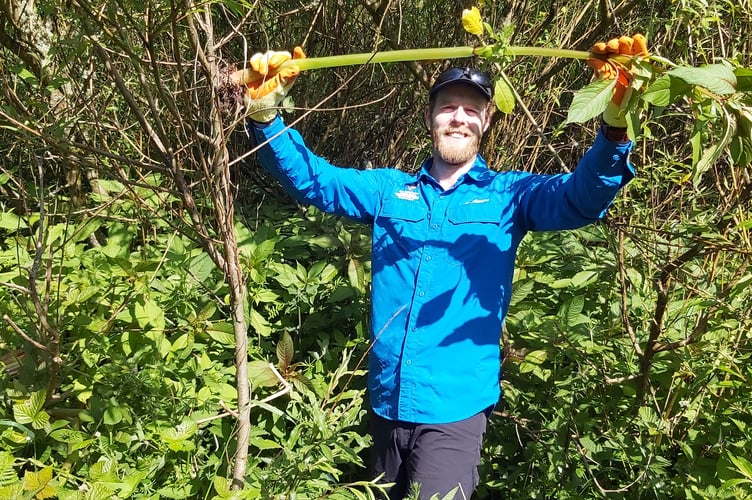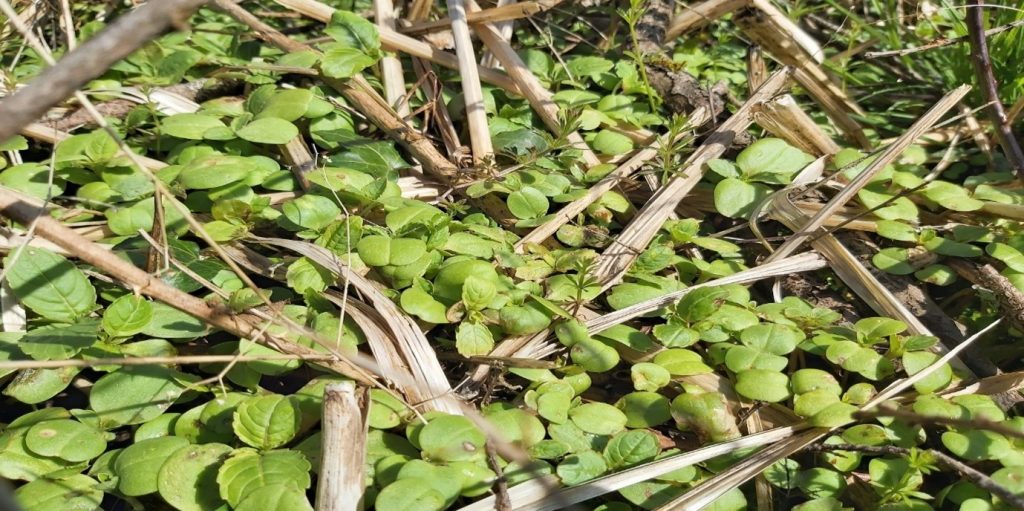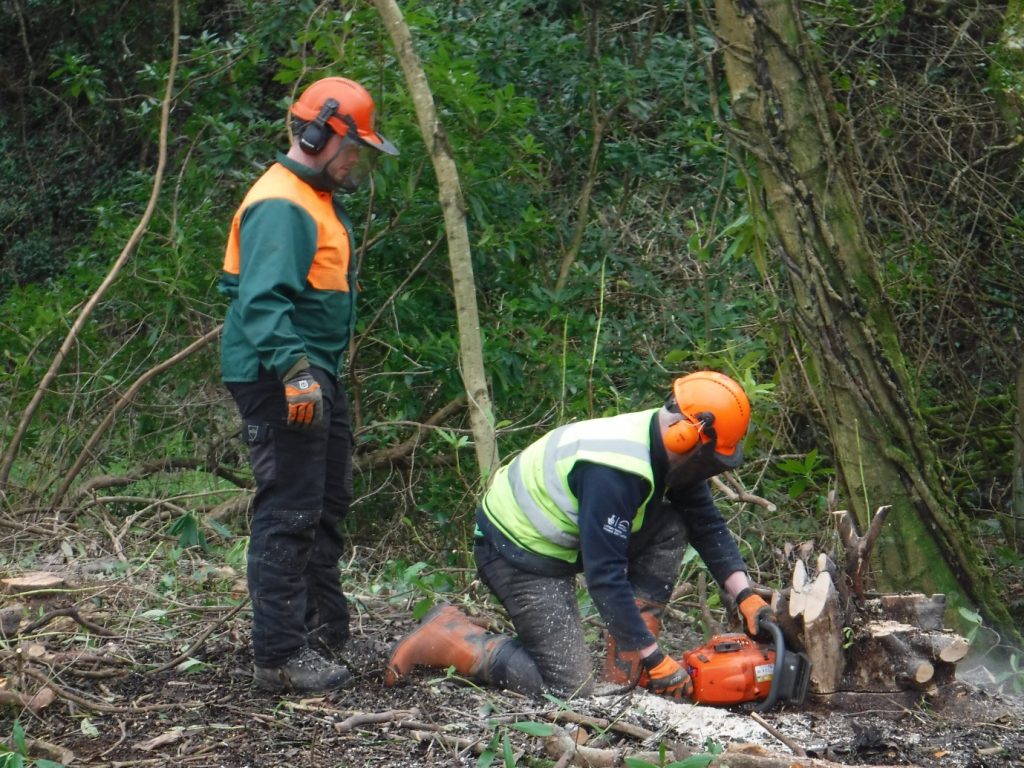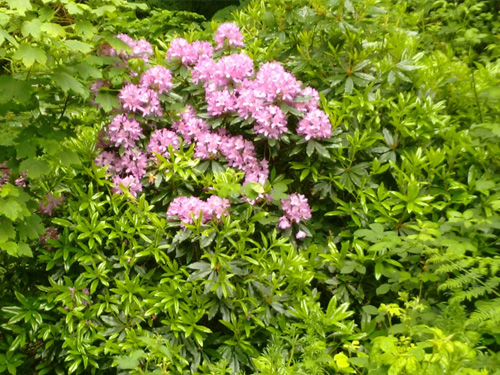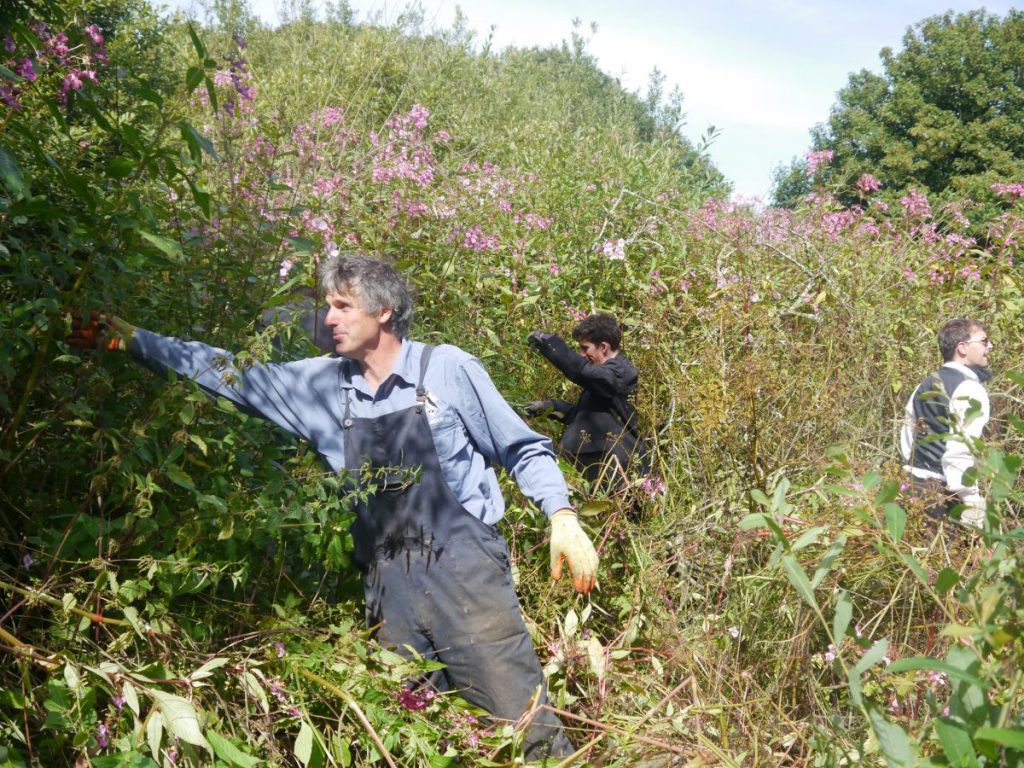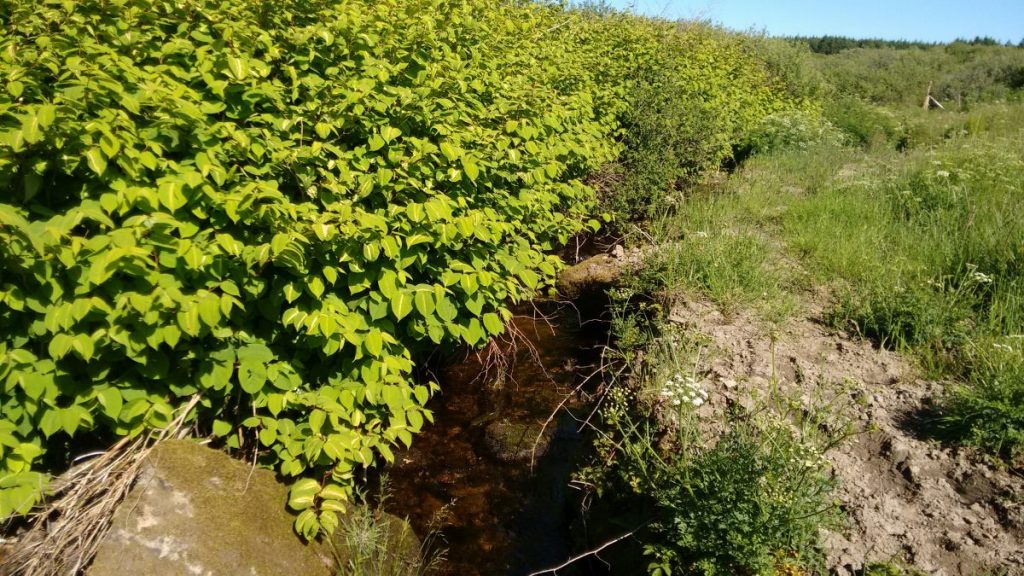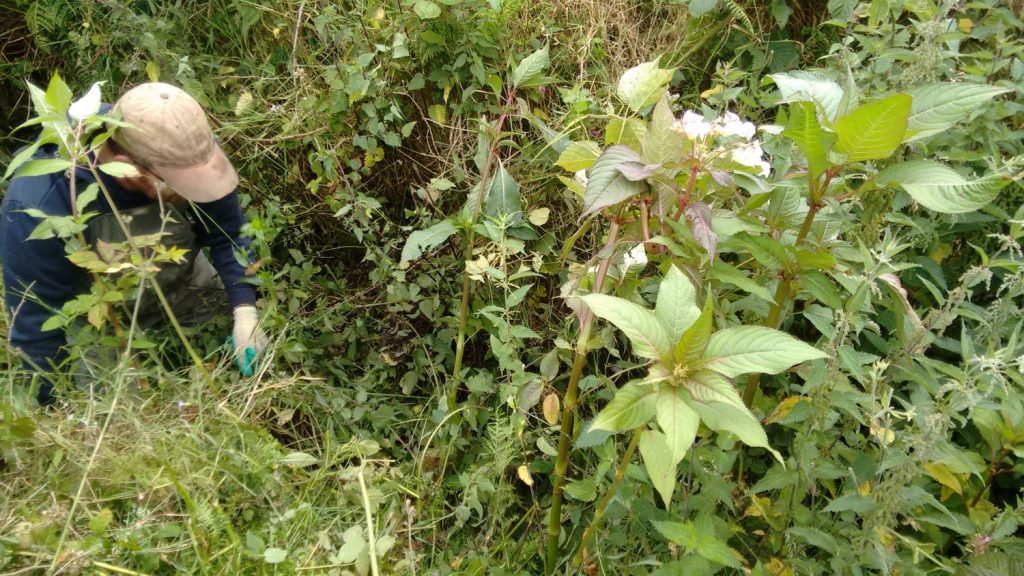Japanese knotweed (fallopia japonica), a member of the dock family, is a tall, vigorous ornamental plant that escaped from cultivation in the late 1800s.
Japanese knotweed has a vigorous root system, with roots called ‘rhizomes’. The rhizome system is extensive and can grow up to 3m deep and 7m across. The rhizomes are thick and woody with a bright orange centre. The stems are hollow (bamboo-like), are covered in purple speckles and grow up to two to three metres tall. Leaves are oval with a flattened base and a pointed tip, and grow up to 12cm long. A mass of small creamy-white flowers which hang in clusters are produced during August and September.
During the winter months, the leaves die back leaving old woody stems which can stay upright for many years. New red or purple shoots emerge in the spring, with rolled back leaves. These shoots grow very quickly due to the huge storage facility of nutrients in the rhizomes, and in some areas growth has been recorded at a staggering 4cm a day!
How does it spread?
Japanese knotweed spreads mainly through fragments of rhizome, or pieces of cut stems. A small piece of root the size of a fingernail has the potential to regenerate a new plant. Rhizome material can remain dormant in the soil for up to 20 years. If contaminated soil is moved, then new infections will arise. If cut stems are buried in soil, or have contact with water, they can regenerate. However, if the cut stem is dried thoroughly, no regeneration occurs.
To date, only female plants have been recorded in the UK, so all the plants so far are all genetically identical, ie clones. Two closely related species are also found in the UK, but thankfully it rarely produces viable seed.
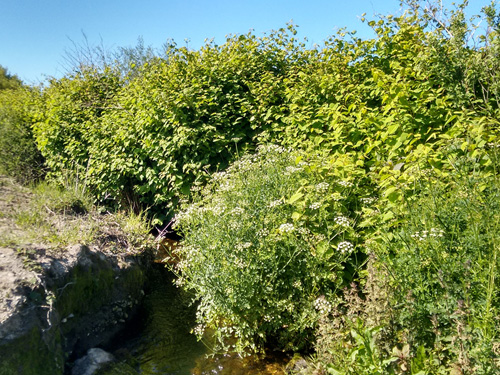
Dispersal
Japanese knotweed is most commonly spread in rivers where fragments of rhizomes, or pieces of cut stems, are washed downstream forming new plants. Unfortunately, it is often spread by humans tipping garden waste containing rhizome fragments, or using contaminated topsoil from construction sites.
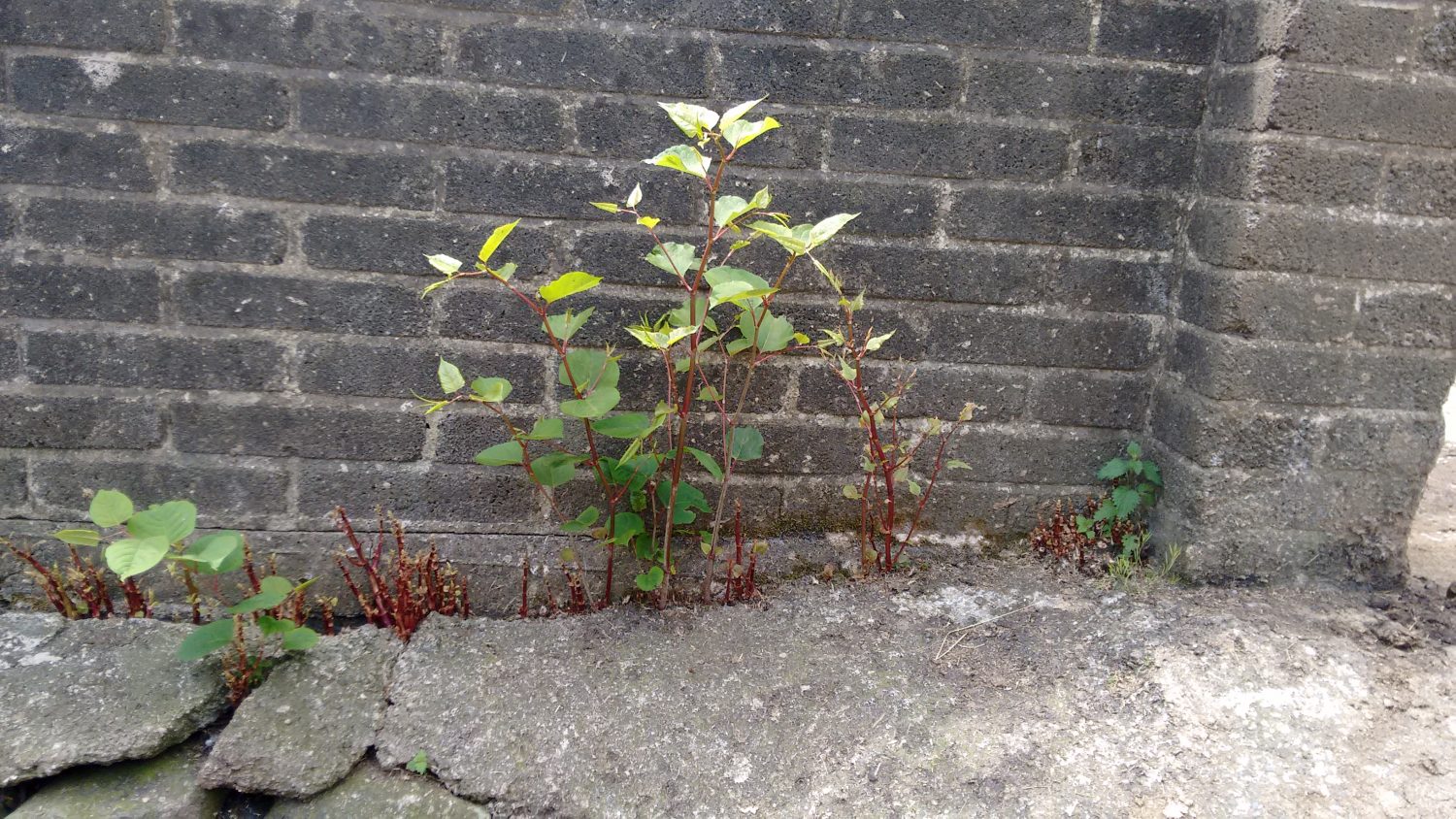
Control strategies
It is recommended that all stands of Japanese knotweed are treated in their original location with a suitable herbicide, over a period of several years. Herbicide treatment must only be carried out by a suitably qualified person, and if using in or near water, approvals must be sought from Natural Resources Wales (or Environment Agency if you live in England). If there is no regrowth, you must not assume the plant is dead, as the rhizome can lie dormant, and disturbing the soil is likely to result in regeneration.
